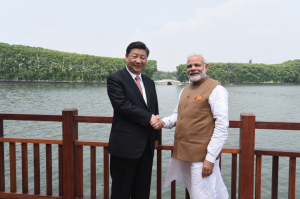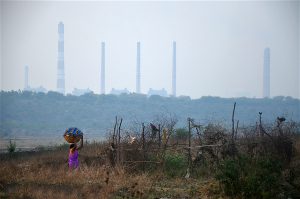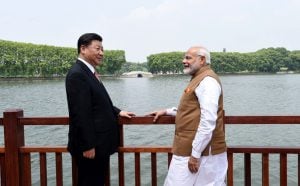When China announced its Belt and Road Initiative in 2013, it quickly became a lightning rod for discussions around sustainable development and green finance. The ambitious project to build infrastructure and improve connectivity in over 65 countries along strategic land and maritime routes could boost global investment in green technology and renewable energy or lock countries into polluting projects for decades to come.
So how can sustainability be built into the Belt and Road initiative? In this interview with Sherry Madera, chair of the Green Belt and Road Investor Alliance (GBRIA), and special adviser for Asia at the City of London Corporation, she says that Western countries need to work proactively with China to help developing countries establish their own sustainable agendas. Nonetheless, there will still be disagreements, particularly with regards to the use of so-called “clean coal” in countries with limited energy access.
Catherine Early (CE): What are the aims of the Green Belt and Road Investor Alliance?
Sherry Madera (SM): The alliance came about from last year’s research paper Greening the Belt and Road by the Green Finance Institute (GFI) and Green Finance Committee (GFC). I chaired one of the work streams on greening the Belt and Road, and out of that consultation with industry and government, one of the recommendations was to set up a group that could take this discussion forward.
At least 65 countries are involved in the Belt and Road, and all different types of infrastructure; telecoms, energy, roads and rail. It’s fine for the international community to say it would like the Belt and Road to be financed sustainably, but there are layers and layers of detail under that, and that’s the reason this investor alliance was conceived.
The three work streams that we’re taking forward are: harmonising standards for green finance; how to drive capital markets’ efficiency for this finance to give long-term benefits; and capacity building. We’re still defining what that means, but having countries like the UK, which is very much at the forefront of thinking on green finance, working along the Belt and Road where countries perhaps have less developed financial systems and sustainability agendas, they can both teach and learn about the issues involved in financing some of these projects. Then we can make sure that these rules, principles and standards make sense in places along the route that are a little less developed.
CE: How can the issue of standards be resolved, so that everyone is using the same definition of green finance? The Greening the Belt and Road report gives the example of a “clean coal” project, which would be considered green by Chinese banks, but not by the Climate Bond Initiative, or the International Capital Markets Association, used by more Westernised banks.
SM: If you look at most investments’ sustainability charters and standards, 80% of them are the same. They’re looking at the long-term impact that an investment would make on climate change. The notable difference across the different types of standards globally is about clean coal, or the use of coal in general. We need to see how we can make a bridge between China’s standards in particular, and those in Europe.
We need to see how we can make a bridge between China’s standards in particular, and those in Europe.
Western countries can get quite worried about the use of coal in any shape or form, and that comes from the right place; renewable energy is now tumbling in price, pulling any of the black stuff out of the ground will end up with some level of pollution. But we need to be alive and harmonised to the fact that these countries along the Belt and Road are in a very different place economically to where we are. Actually having access to energy at all is the primary objective [in those countries].
So there needs to be an understanding of where these principles are coming from. Are they being defined as a transition to perhaps even cleaner and greener principals in the near future? That is what this group is starting to explore.
The thorny issues are ones that we shouldn’t just sweep away, we should understand where they’re coming from, and how they impact countries that are not in the developed world, or indeed in China; places like Pakistan, Kazakhstan or East Africa, which are all squarely on the Belt and Road route.
CE: What are the main challenges in making sure that infrastructure built in so many places meets green standards?
SM: It’s a question on how it’s not only impacting the immediate environment – everyone can imagine a road cutting through a piece of green environment – but what happens around that? What about the animal life and the impacts around that? That might not be something that’s felt immediately, but once you build a station for the railway, a community could be built out that wasn’t there before and destroy perhaps an even larger piece of environment. There are layers of impacts that are not assessed in a quick due diligence exercise, but could have significant impacts over years. It’s a question of where you stop, and where you draw the line.
CE: China and London will be working very closely on this. What expertise is China looking to London to provide?
SM: I think there’s mutual benefit, London is learning just as much as China. I say that because the Chinese green bond market is the largest in the world. The chair of the Green Finance Initiative, Sir Roger Gifford, has a good way of putting it. He says it’s like pizza – it’s a global concept but you need local delivery. If you’re not getting that local delivery right, and not able to understand what the supply and demand is in your own market, it’s really difficult to expand your own criteria to other markets.
CE: The GFI and GFC have just launched a UK-China Green Finance Centre. Please tell me a bit about this and what projects it will be working on.
SM: It’s really exciting. It was launched a few weeks ago, and will be a wider home for policy work and implementation in the green and sustainable space. It’s early days, but the team in the City of London is focussed on green, not just in the city of London, but also the rest of the world.
Xiong’an – a project by the Chinese government located just outside Beijing – could be a really good showcase project for the centre. The plan is to create a financial centre to focus not only on traditional finance but also green finance, and to create a proper city that is green and sustainable, and that has been funded by green and sustainable finance.
There is outstanding demand in the investor community to showcase how you can build a really clean, environmentally-friendly, smart city. I lived in China for three years, and saw how it goes about doing things; when the Chinese government has an idea like this, it really pushes forward. Pudong is a great example, that part of Shanghai was fishing ports and farmland, and 30 years later it is a thriving hub of Chinese financial services bar none. So this idea of creating a clean, green smart city in Xiong’an is very much something I think we need to pay attention to. It would be a great study for the Green Finance Institute.
CE: At what point did the finance sector sit up and pay attention to the need for green finance?
SM: The international finance community is driven by returns. To a certain critical point, green finance was a Corporate Social Responsibility-related, box ticking exercise – it looked good, it felt good, some investors were very passionate about it.
That’s completely changed. A lot of it has to do with the price of renewable energy. Because actually when it comes down to returns, to future-proofing your investment, a polluting power plant is seen as a much higher risk compared with renewable energy.
The financial community’s interest in green finance is based on real, solid risk analysis and that’s why I think it is here to stay
When we talk about returns, we talk about risk. We had a major shift [away] from the reliable financial flows that may have come from, for example, a polluting power plant, because that’s now seen as a much higher risk compared with renewable energy, where the cost is coming down. Renewable energy will be a much more economical solution and therefore, a more secure yield in ten years' time.
That isn’t even taking into account where there may be increased fines or levies on companies that are increasing or maintaining their pollution levels, or considering the policy impacts from government that may come fast and furious down the chain over the course of the next ten or twenty years. I think the financial community’s interest in green finance is based on real, solid risk analysis and that’s why I think it is here to stay.
CE: What has China’s role been in the green finance debate?
SM: I think that they have been incredibly inspirational in terms of thinking quite a lot about green and sustainable finance, the impacts on the environment, perhaps arguably earlier on than countries that have developed quickly. A seminal point was China and the UK co-chairing the finance work stream during the G20 meeting that China hosted in 2016. That was the first time that green finance was on that agenda, and it’s been maintained since then in other presidencies of the G20, and China has been a driver of that.









